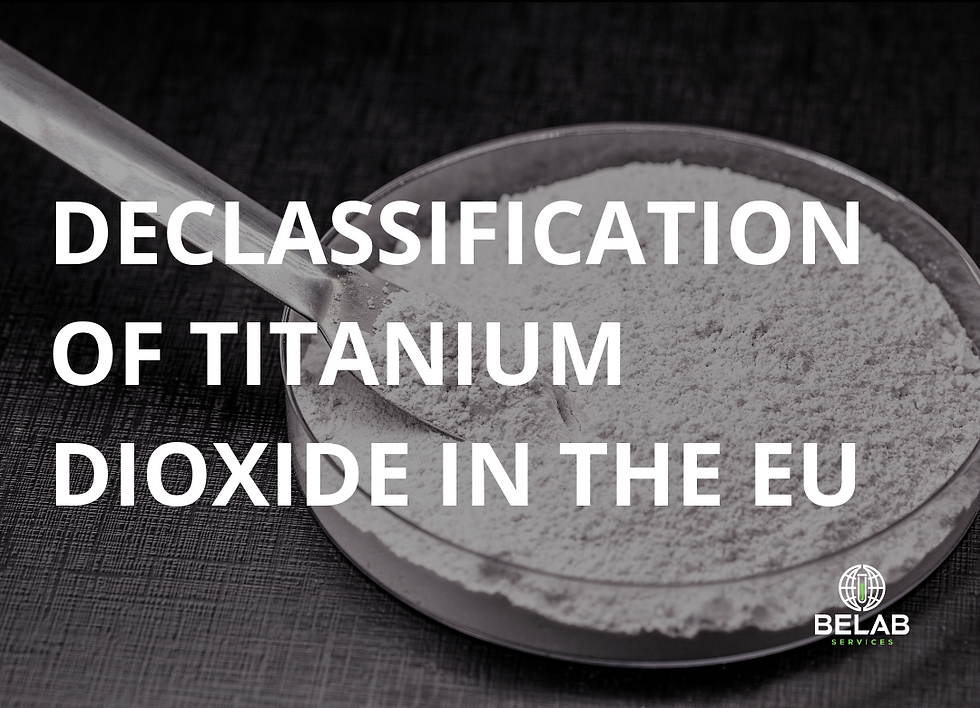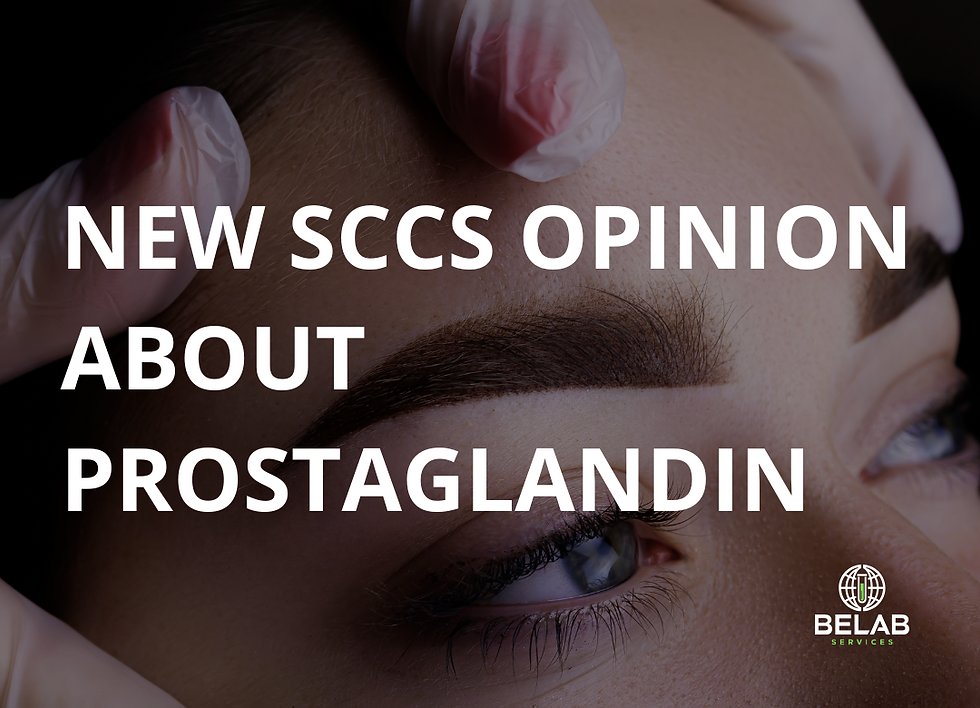Declassification of Titanium Dioxide in the European Union
- Daniel Jiménez

- Aug 12
- 3 min read
On August 1, 2025, the Court of Justice of the European Union (CJEU) upheld the annulment of the classification of titanium dioxide (TiO₂) as a possible inhalation carcinogen, a decision that marks a significant shift in the regulation of this ingredient used in various industrial, cosmetic, and food products.
Table of contents

Case Context
Titanium dioxide powder (particle size ≤10 μm and concentration above 1%) was classified in 2019 as a suspected inhalation carcinogen under CMR (Carcinogen, Mutagen, Reprotoxic) Category 2. This classification was adopted by the European Chemicals Agency (ECHA) based on the opinion of the ECHA Committee for Risk Assessment (RAC) issued in 2017.
However, this classification was subsequently annulled by the General Court of the EU in 2022 due to a lack of sufficient scientific evidence to justify this status. Faced with this annulment, both the European Commission and France appealed to the CJEU, which ultimately upheld the decision, stressing that there was no conclusive scientific evidence to support the classification of TiO₂ as an inhalation carcinogen.
Regulatory Implications
This ruling has a significant impact on several key regulations, particularly in the area of REACH (Registration, Evaluation, Authorisation and Restriction of Chemicals Regulation) and the classification procedures under the Globally Harmonized System (GHS) and CLP (Classification, Labelling and Packaging of Substances and Mixtures Regulation).
For the cosmetics industry and other sectors that use titanium dioxide in their products, the repeal of this classification could simplify regulatory processes, as it eliminates the need to comply with additional restrictions that would otherwise have limited the use of TiO₂ in certain formulations. Furthermore, the decision could facilitate the safety management of TiO₂, particularly in cosmetics and food products, by reducing requirements for risk management and the implementation of protective measures in the workplace.
What does this ruling mean for the industry?
For the industry, this ruling could be considered a victory, as it removes one of the regulatory barriers to the use of TiO₂ in cosmetics and other consumer goods. While companies will still need to ensure the safety of their products, the decision could offer greater clarity and flexibility in the management of substances like TiO₂.
However, it is also important to emphasize that, although TiO₂ has been declassified as a carcinogen, the court emphasized that this does not mean that titanium dioxide is completely safe. Authorities will continue to monitor the use of this substance, and further scientific safety assessments are expected.
Final Reflection
This change in the classification of titanium dioxide highlights the importance of basing regulatory decisions on sound and up-to-date scientific data. The ruling also underscores the dynamics between science, politics, and regulation, and how these interactions can have a direct impact on businesses and consumers. At Belab Services, we closely monitor these regulatory developments to ensure our clients are always up to date with the latest regulatory changes and can efficiently adapt to an ever-evolving regulatory environment.
What do you think about this decision?
Do you think this is a victory for science or industry, or a balance of both? We invite you to share your thoughts with us in the comments.
_edited.png)







Comments